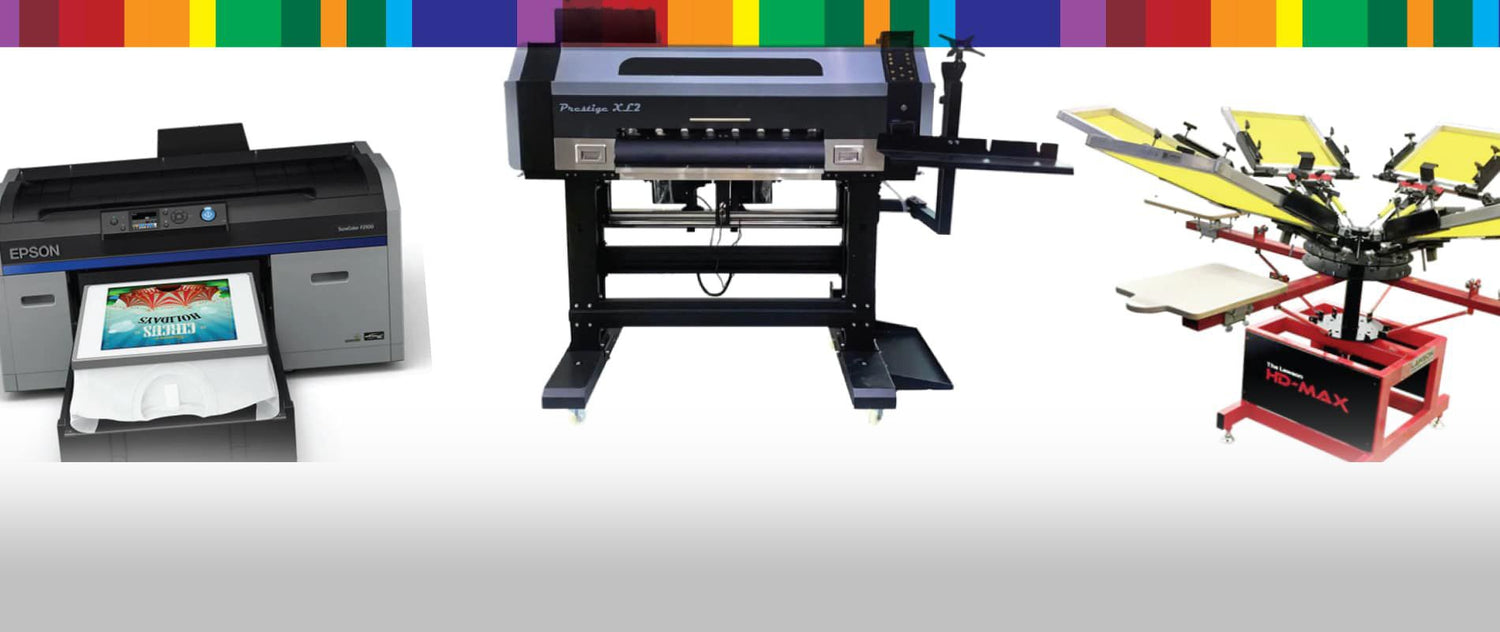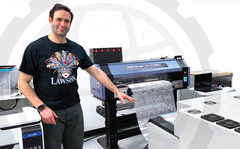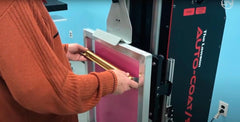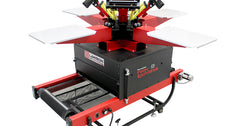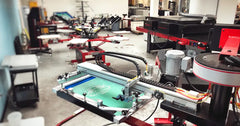In the world of garment decoration and printing, several methods have emerged to cater to different needs and preferences. Among them, Direct-To-Garment (DTG), Direct-To-Film (DTF), and Screen Printing are three popular techniques for decorating tshirts, hoodies and other garments. Each of these methods possesses unique characteristics and offers distinct advantages. In this blog post, we will delve into the world of DTG, DTF, and Screen Printing, highlighting their differences and helping you understand which method might be best suited for your printing needs.
Direct-To-Garment (DTG) Printing
DTG printing, also known as digital tshirt printing, is a process that involves using specialized inkjet printers to directly apply pigment ink onto shirts. This method allows for highly detailed and intricate designs to be printed with exceptional color accuracy. DTG printing is particularly popular for smaller print runs or custom designs, as it cuts out the labor intensive process of making screens or stencils that screen printing requires.
Advantages of DTG Printing
- Ideal for complex, full-color designs and high-resolution images.
- No screen setup required, making it cost-effective for smaller print runs.
- Allows for printing on various fabric types, including cotton, blends, and synthetics.
- Excellent color vibrancy and accuracy.
Limitations of DTG Printing
- Longer printing time compared to other methods.
- May not be as cost-effective for large quantity orders.
- Dark and black shirts require pretreating before printing for optimal results.
Direct-To-Film (DTF) Printing
DTF printing is a relatively new technique that combines aspects of both DTG and traditional screen printing. In DTF printing, a design is digitally printed onto a specialty coated PET film via an inkjet printer. Then, a powder adhesive is applied to the wet ink and dried. After this, transfer the image onto the garment using a heat press. This method offers vibrant colors and can be done as a one-off print or for large production run, making it a popular choice for apparel decoration.
Advantages of DTF Printing:
- Suitable for a wide range of fabric types, including cotton, polyester, and blends.
- Offers high-resolution prints with vibrant colors and excellent durability.
- Allows for precise control over the design placement and color variations.
- Can be cost-effective for both small and large quantity orders.
Limitations of DTF Printing
- Requires some initial setup and preparation
- Each design must be heat pressed onto the shirt.
- Not as soft of a feel (hand) compared to DTG and screen printing.
Screen Printing
Screen printing is a traditional method that involves using Screen Printing Equipment and Screen Printing Supplies to transfer ink onto a garment through a mesh screen. A stencil is created for each color in the design, and the ink is pushed through the screen using a squeegee. Screen printing has been widely used for its versatility, durability, and vibrant colors.
Advantages of Screen Printing:
- Well-suited for large quantity orders, as it offers the fastest production speeds.
- Allows for printing on various surfaces, including garments, paper, plastics, and more.
- Often the lowest cost way to decorate items.
Limitations of Screen Printing:
- Setup is more labor intensive, especially for high color prints.
- Screen printing requires more equipment and generally more space.
- Not ideal for printing high-resolution images or intricate details.
Learn how to Screen Print in-person with Lawson’s Screen Printing Classes
Conclusion
Choosing the right printing method for your garment decoration needs requires consideration of various factors, including design complexity, quantity, fabric type, and budget. Direct-To-Garment (DTG), Direct-To-Film (DTF), and Screen Printing all have their strengths and limitations. DTG printing is ideal for intricate designs with vibrant colors, while DTF printing combines aspects of DTG and traditional screen printing, offering excellent durability and color vibrancy. Screen printing, on the other hand, excels in large quantity orders and provides vibrant and opaque colors.
By understanding the differences between these printing methods, you can make an informed decision that aligns with your specific requirements, ensuring high-quality and visually appealing results for your printed garments.

